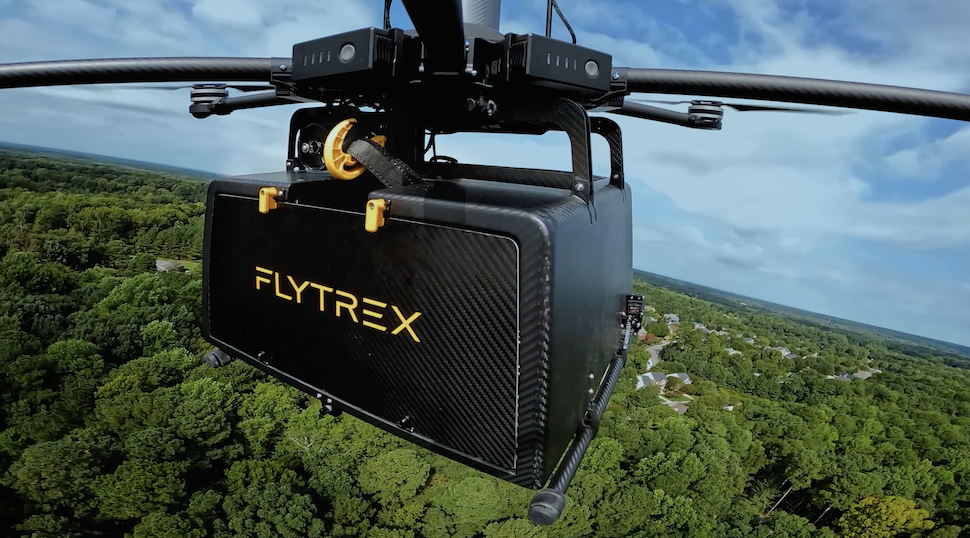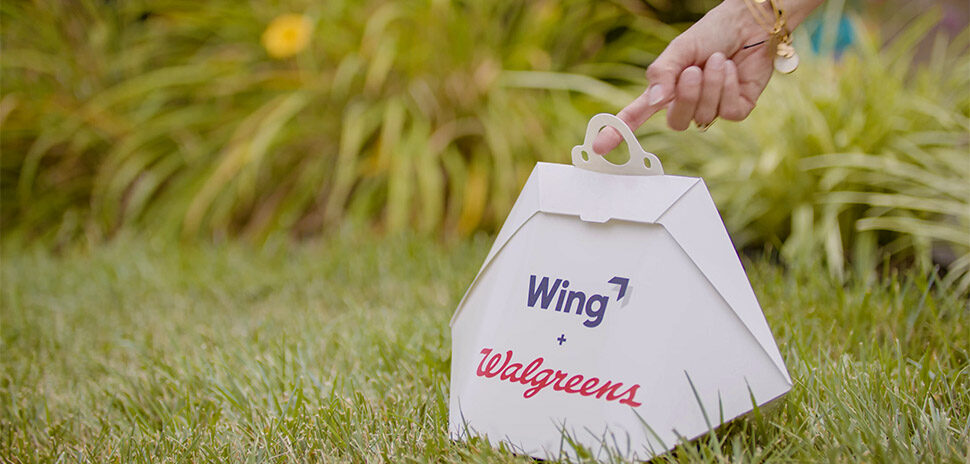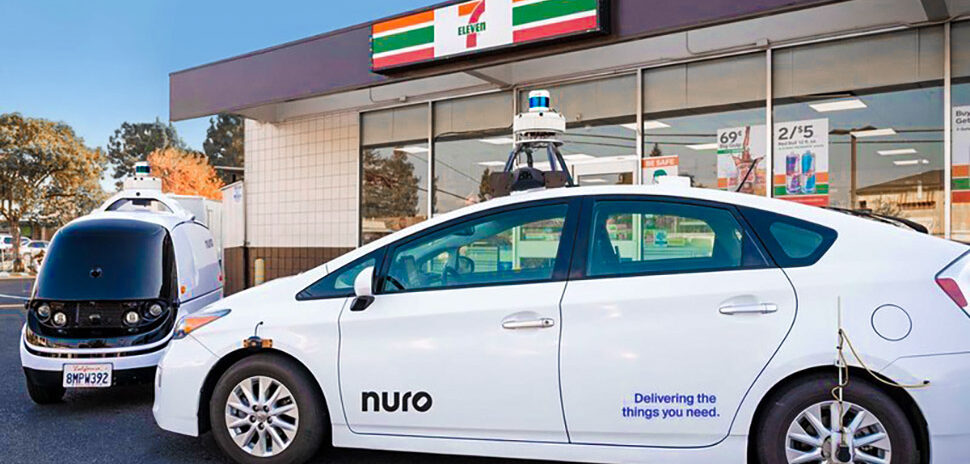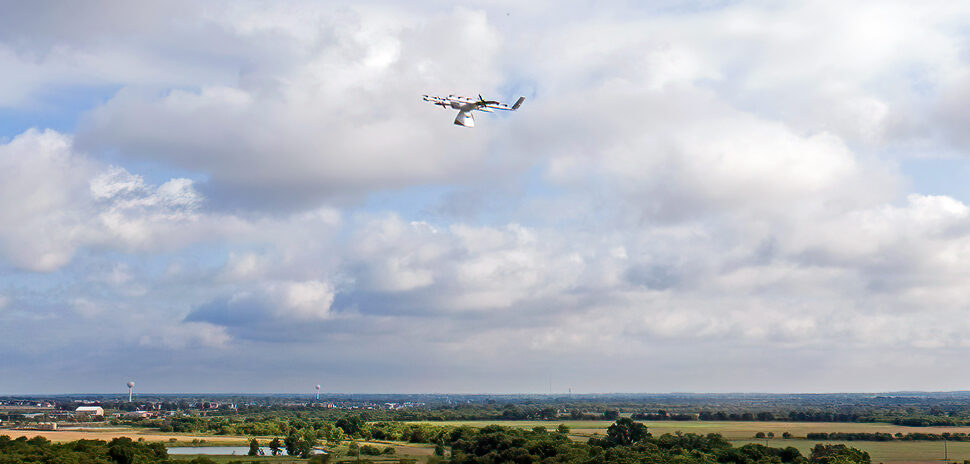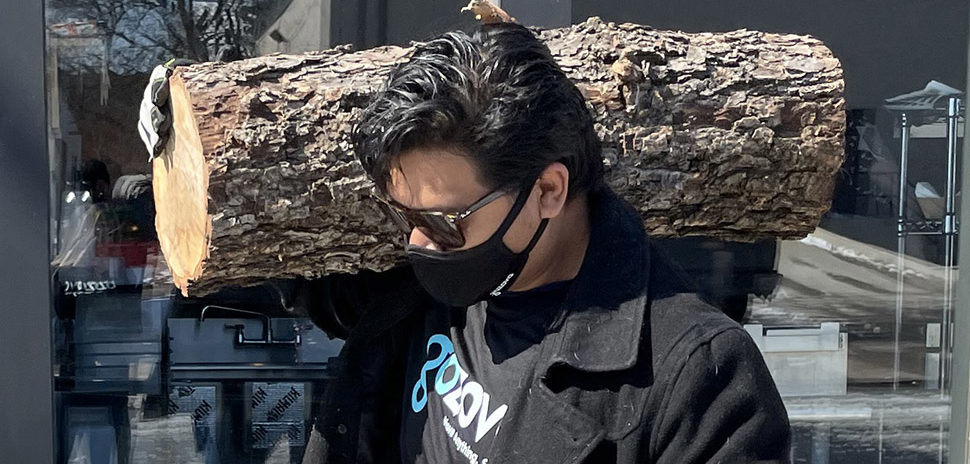Yariv Bash has two big missions in life: making Israel’s 2024 Beresheet II moon landing a success as a board member of SpaceIL, and doing drone deliveries to America’s back yards. All 82 million of them.
He’s well on his way with the moon mission. In 2019, as co-founder and team leader of SpaceIL, a Tel Aviv nonprofit chasing the $20 million Google Lunar XPRIZE, he helped lead Israel’s first mission to the moon. Working with Israel Space Technologies, SpaceIL developed the Beresheet (Genesis) robotic moon lander. The goal: Make a soft landing on the moon, move the lander 500 meters, then transmit moon casts and a data uplink to win the prize. Beresheet did make it to the moon—but was destroyed in a hard landing. Now, as a board member of SpaceIL, Bash is involved in the mission of Beresheet II, aiming to make a successful landing in 2024 or 2025.
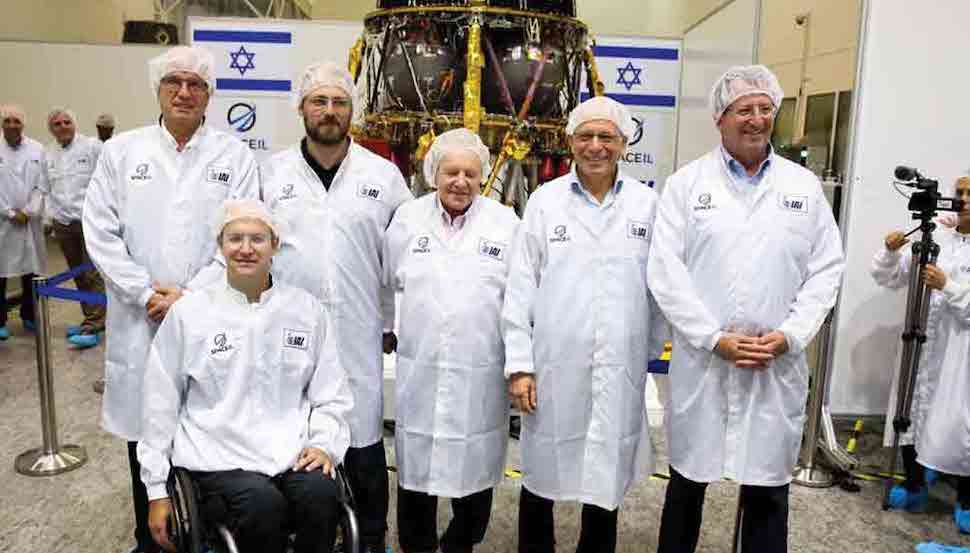
Yariv Bash, in wheelchair at front, with part of the Beresheet moon mission team. Behind him from left are Aviad Shmaryahu of the Israel Space Agency, SpaceIL co-founder Kfir Damari, philanthropist Morris Kahn, SpaceIL CEO Ido Anteby, and Ofer Doron, head of IAI’s space division. The Beresheet I robotic moon lander is in the background [Photo: SpaceIL]
Meanwhile, back on planet earth…
Bash has some deliveries to do. Tel Aviv-based Flytrex has made drone deliveries in Reykjavík, Iceland, for the last four years, but its biggest footprint to date is in North Carolina. Starting in 2018, Flytrex began making restaurant food deliveries in suburban North Carolina neighborhoods, in collaboration with the FAA’s UAS Integration Pilot Program and the state’s department of transportation.
That service has since expanded to three North Carolina cities—Fayetteville, Raeford and Holly Springs—and widened beyond restaurant meals to include Walmart and Target grocery deliveries.
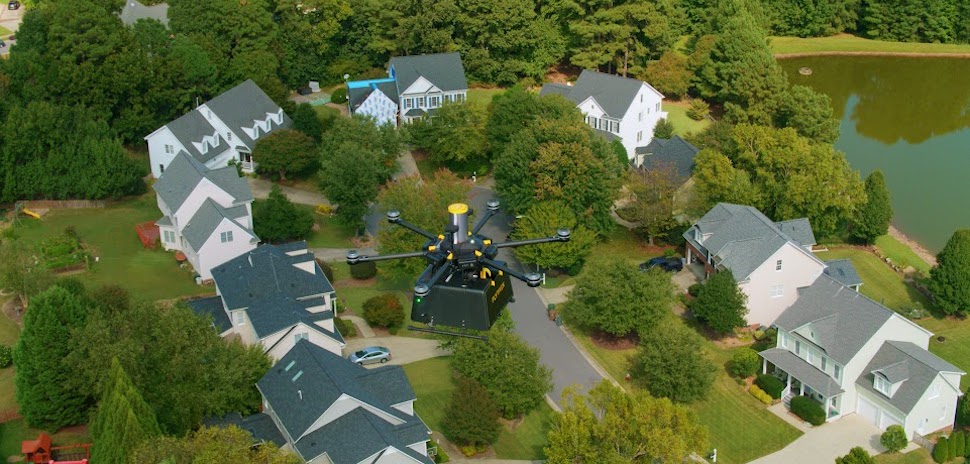
A Flytrex drone making its approach for a delivery. [Photo: Flytrex]
“We’ve been step by step, very slowly growing over there,” Bash told Dallas Innovates. “They already have three stations working on a daily basis, servicing more than a few thousand families in all three locations, making deliveries from dozens of retailers and restaurants. We continue to expand the different variety that we can offer from extra restaurants and more retailers.”
In December, Flytrex was awarded formal FAA approval for drone deliveries with a range of up to one nautical mile in North Carolina, expanding its reach there to 10,000 households.

Yariv Bash, co-founder and CEO of Flytrex, was paralyzed below the waist in a skiing accident in 2017. But that did nothing to slow him down in his startup journeys—both to the moon and America’s back yards. [Photo: Flytrex]
Dallas-Fort Worth operations slated to begin in Q2 2022
Now Flytrex is expanding to its second state in the U.S.—by heading to Dallas-Fort Worth.
“We’ve looked at a lot of locations in terms of demographics, population density, FAA air space, the different restaurant chains that we already have an agreement with, and a lot of other variables on where we’d like to open our next cluster of stations,” Bash told us. “And the Dallas-Fort Worth area pretty much shined. So we said, ‘Well, we have to go there.'”
Flytrex plans to launch its first Dallas-Fort Worth operations within a few months, in early Q2. But it won’t be in the big cities—Bash is currently looking at undisclosed suburbs near both Dallas and Fort Worth.
“The solution is just perfect for the suburbs,” Bash said. “If you’ve got a back yard, we can just lower the package from 80 feet up in the air straight to your back yard. All you have to do is open your back door and pick up the package. Plus, it’s a lot faster than using humans in the suburbs for deliveries, and it’s a lot more affordable.”
So where will Flytrex be operating?
“We’re actually open to suggestions,” Bash said. “What we’ve learned from our experience in North Carolina is that some towns would be more positive toward drone deliveries, and some would rather just wait and see how it works in other locations. We’re open to being approached by other towns who are interested in being on the forefront of the drone delivery revolution.”
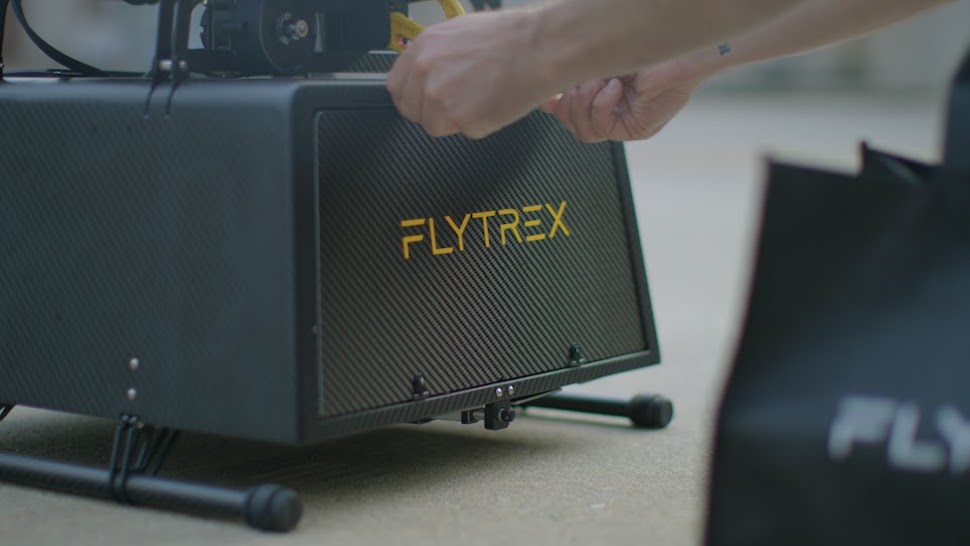
Packing a Flytrex drone. [Photo: Flytrex]
Restaurant-packed shopping centers—and ‘runners’ who race to grab food
To find its locations, Flytrex looks for restaurant-packed shopping centers near quiet suburban neighborhoods. Then, it sets up operations at the shopping center, hiring employee “runners” to dash up to hundreds of feet to grab to-go orders and launch them in a drone.
“We open the station and the restaurants and retailers don’t have to do a thing,” Bash said. “It’s a lot more affordable than your typical on-demand experience. In the future, we’ll be expanding the area of where we can pick up goods. But that’s down the road.”
A ‘win-win’ for both customers and restaurants/retailers
Bash says Flytrex deliveries come at no added cost for customers, while offering big savings to restaurants and retailers.
“We do not charge the customer,” Bash said. “We do not increase the price of the items on the menu. It’s the same price as in the restaurant, without charging you anything else. We make all our money by charging a fixed amount from the restaurant, which is pretty much always a lot less than what they pay today” using human-driven vehicle delivery services.
That reduced fee could prove to be a big help to restaurants, which have long complained about what some see as excessive fees from delivery services.
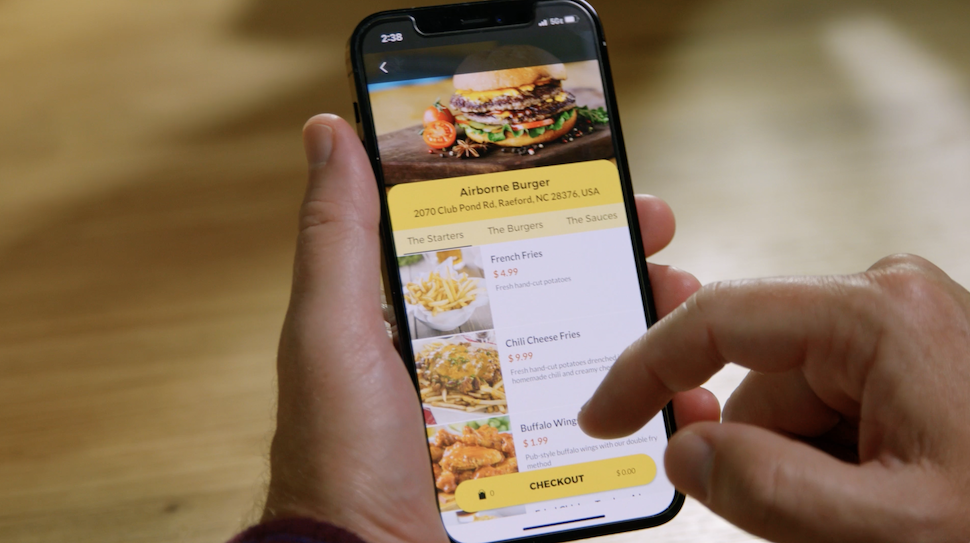
Customers who live in Flytrex service areas can use the company’s app to order from restaurants and retailers near their local Flytrex station. [Video still: Flytrex]
“Today restaurants are losing money per delivery,” Bash explained. “When you’re using DoorDash or Uber Eats or any of those companies, [customers] pay a few bucks for a delivery fee, a few bucks for a service fee, maybe a bit more on tipping. The restaurant on top of that is charged up to 30% from the amount ordered. Restaurants are not making 30% margins on their revenues. So, with Flytex, we offer them a deal that turns it into a win-win situation.
“It’s also great for your local community. Because until now, specifically those mom-and-pop restaurants who couldn’t bargain with DoorDash and Uber Eats and those guys, were either losing customers or paying them 30%. With our offering, which is again much better, they can make money by delivery. So, it’s just another source of income for them.”
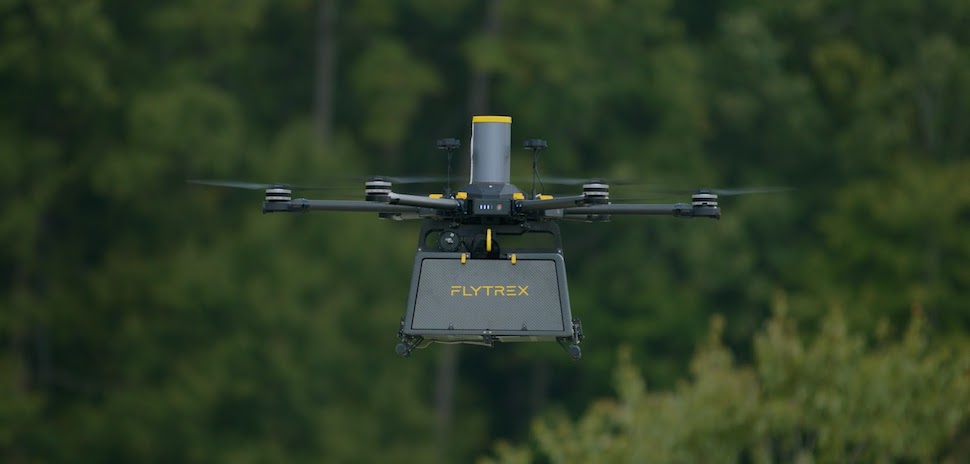
The Flytrex drone—certified by the FAA as a commercial general aviation aircraft—flies at 32 miles per hour with a round-trip range of five miles. [Photo: Flytrex]
Flytrex drone is ‘like a Tesla without a steering wheel’
If you think you can drive to Best Buy and pick up a Flytrex drone, think again. It’s classified by the FAA as a commercial general aviation aircraft—which means you’d have to own an airline to buy one, Bash says.
“It was designed for home deliveries. It was designed to be very quiet,” Bash said. “We make a delivery a lot faster than a drone that has to land.”
The drone is backed by a “completely autonomous” system, reflecting the fact that Israel was until recently the #1 drone exporter on earth, with expertise in both military and homeland security drones. (The U.S. has since surpassed it, Bash says.)
“There are multiple redundancies on the drone itself, and the system is capable of autonomously handling 99% of any malfunctions that might happen,” Bash said. “If you think about cars, this is the holy grail of the autonomous car. It’s a completely autonomous vehicle. It’s like a Tesla without a steering wheel.”
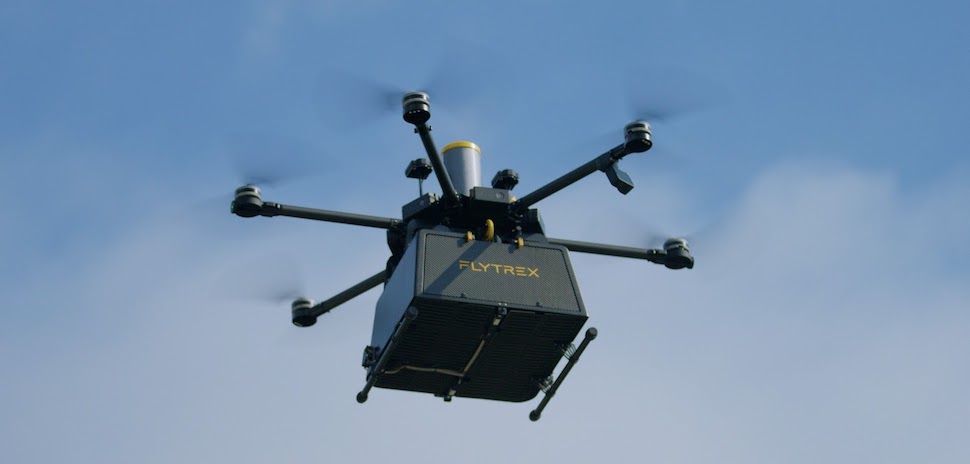
The Flytrex drone can hold up to 6.6 pounds in its package bay. [Photo: Flytrex]
No camera, no joystick—they really mean autonomous
The Flytrex drone is so autonomous, it requires no one on the ground to operate it. There’s no camera on the drone, no joystick on the ground.
“When we hire people, they’re like, ‘Oh, I’m a great drone expert, I’m the best drone pilot,'” Bash said. “When they hear about what they’re going to do, they’re usually very disappointed—because they’re not going to fly a drone.”
Driving a car? Now that’s hard, he added.
“If you think about the certification needed for someone to drive a two-ton vehicle at 55 miles per hour while there are other vehicles simultaneously zig-zagging and people crossing the roads—our system is like two orders of magnitude easier to operate. So really, if you’ve got a driver license you are way overqualified to operate the system.”
Instead, employees at the Flytrex station simply monitor a map of the service area.
“There’s always a human being monitoring the flights,” Bash said. “He can watch the telemetry and the location of all the drones on a map. And in case of anything unexpected, he can call the drones back home or send them to designated emergency locations.
“But most of the time, let’s say we have a malfunction in the GPS or one of the batteries deteriorated—we’ve got redundancy on each one of those. The system will just alert [the monitoring employee] on a red line that there’s something wrong, and we’ll just divert the drone back home. We’ve tested every scenario with the FAA to make sure that the system behaves as expected.”
FAA certification takes four to five years
“The hard part is not building a drone. Whichever drone you could show me online, we can produce it in our labs in a few weeks, maybe a few months,” Bash said.
“The hard part is certifying that vehicle is a commercial airplane. This is a process that takes four to five years—no matter if you’re Flytrex from Tel Aviv or Boeing from Seattle. It’s a lengthy process with multiple stages. We have different teams and groups and divisions from the FAA watching every step, approving and certifying each design and design change and manufacturing process. Because our skies are very safe today. And it’s in everybody’s interest to make sure that they stay safe as they are today.”
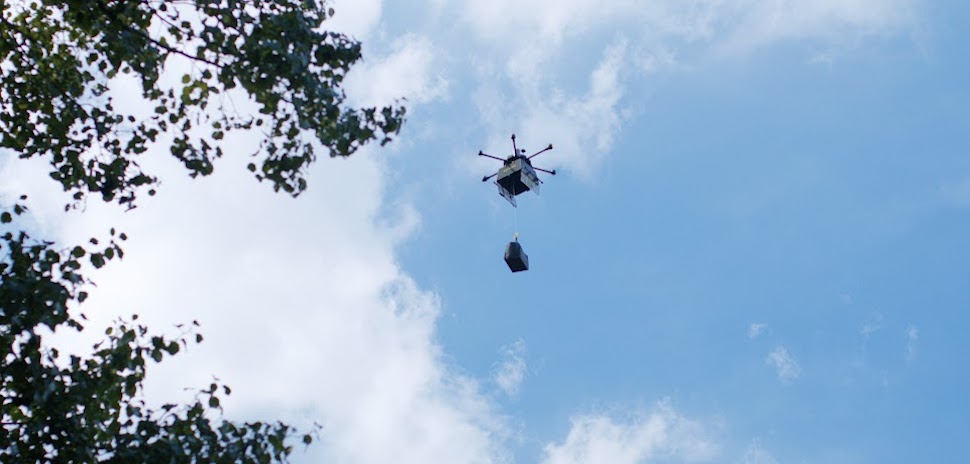
Flytrex drone lowering delivery from 80 feet up in air. [Photo: Flytrex]
Cloud network intelligence keeps the drones safe
If you’ve ever crashed a drone of your own, you know every tree is like a drone magnet. But that doesn’t worry Flytrex.
“We’ve designed an entire cloud system that supports those drones while they’re flying in the air,” Bash said. “You can think about it as a network intelligence. The drones are always connected to the cloud, and basically the cloud tells them where to fly and how to fly. And in the cloud, we have all the data that we need in terms of different obstacles, other drones, other airplanes in the future as well, and anything that might hit the drone or that we might hit with the drone.”
Ordering eggs from a grocery store or bottles from a restaurant? They’ll be safe too, Flytrex says. When the drone reaches a customer’s home, the bottom of the drone drops open and a wire lowers the customer’s package 80 feet to the ground, gently dropping it off.
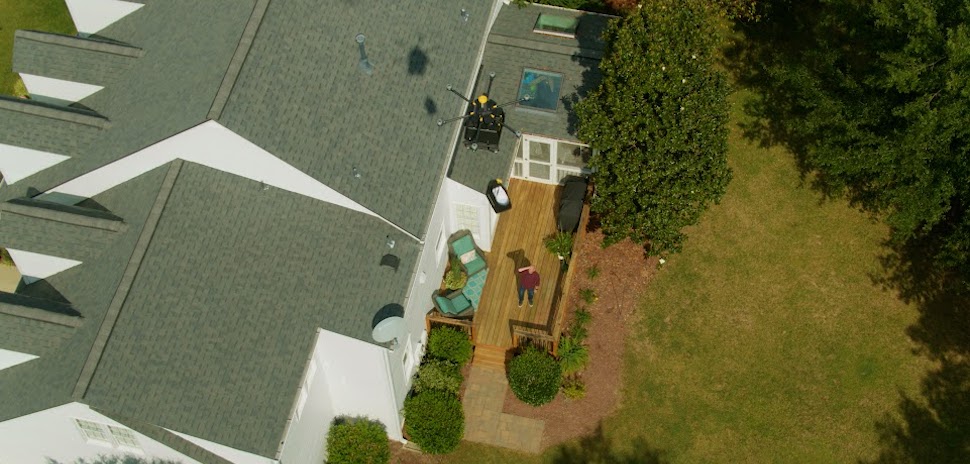
Flytrex drone lowering a package to a customer 80 feet below. [Photo: Flytrex]
The plan: Start small and expand, both in DFW and nationwide
Flytrex is playing a long game. Deliveries are a volume business—the more you can make, the higher your profit margin becomes. As in North Carolina, the startup expects to start small in its first Dallas-Fort Worth-area neighborhoods, then slowly grow its North Texas footprint.
Bash also expects to announce a new cluster in another state “a little later this year.”
After that? Well, Bash thinks about those 82 million American back yards and wonders, why not? Unlike Israel, where apartment-dwellers dominate and where Flytrex doesn’t operate, the opportunities here seem almost endless.
“Listen, the U.S. is such a massive market,” Bash said. “And regulatory-wise, the FAA has really taken it up a notch more than anyone else in the world when it comes to building a mature framework for commercial drone operations—and specifically drone deliveries. With 50 states and more than 82 million backyards, that’s all the market we’re going to need in the next few years.”
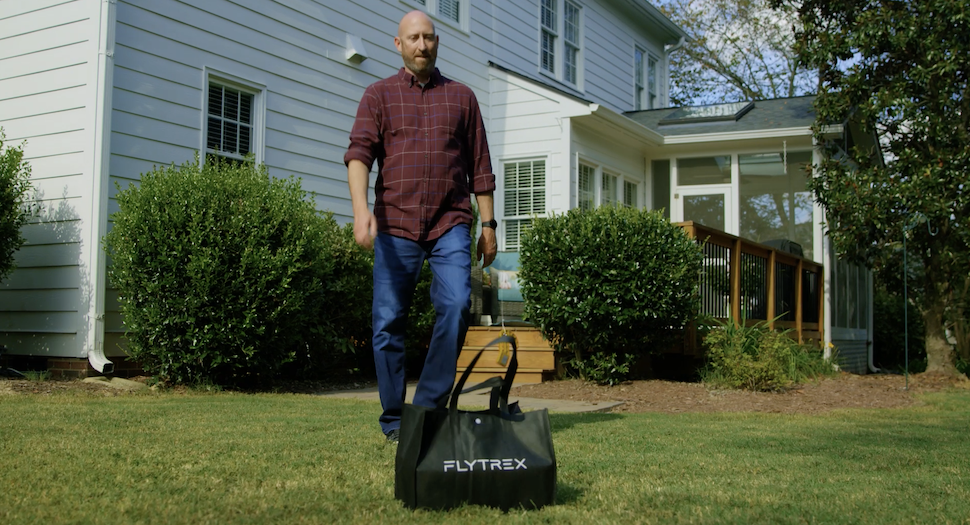
Customer retrieving Flytrex delivery from his back yard. [Video still: Flytrex]
‘The future is already here’
North Texas already has experience with drone deliveries. The Mobility Innovation Zone (The MIZ) at AllianceTexas has been buzzing with drone delivery experiments for years. Hillwood partnered with Alphabet’s Wing to begin operating a drone delivery facility at Frisco Station back in October. Wing also announced a deal with Walgreens to operate an on-demand drone delivery service, starting in Frisco and Little Elm.
“It’s hard to believe,” Bash says, but if you live in the North Carolina neighborhoods where Flytrex operates, “the future is already here. We work there seven days a week from 11:30 a.m. to 8:30 p.m. The service is up and running on a daily basis. So, we look forward to bringing that experience to the Dallas-Fort Worth region as well.”
![]()
Get on the list.
Dallas Innovates, every day.
Sign up to keep your eye on what’s new and next in Dallas-Fort Worth, every day.










